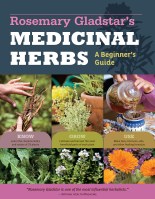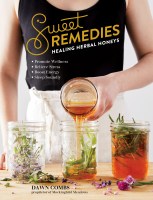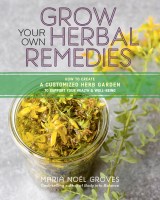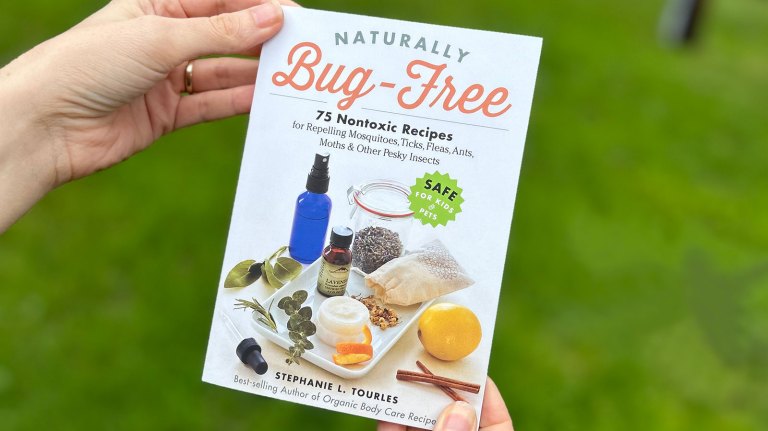Cider Vinegar Benefits and a Quick Fire Cider Recipe
Cider vinegar, long revered and used as a remedy for dozens of ailments, has more healing power than ever with the addition of potent spices.
Cider Vinegar in Modern Medicine
As a general rule, science has largely ignored simple, traditional home remedies like apple cider vinegar, despite their years (or centuries!) of use and countless testimonials about their effectiveness. However, the tide is slowly turning, and there is a growing body of reputable, rigorous studies on the health benefits of apple cider vinegar. The most promising seem to be in the areas of diabetes care, treatment of infections, and weight loss.

Traditional Folk Uses of Apple Cider Vinegar
Here’s a sampling of some of the many ways in which apple cider vinegar (ACV) has, over the centuries, proven itself as a healing remedy.
Leg cramps: ACV is one of the most renowned and effective remedies for healing leg cramps that are due to dehydration, low potassium levels, and overused or stressed muscles. Used as both a preventive and a curative, ACV has been helpful to hundreds of people. Take 1 to 2 tablespoons in ¼ cup warm water daily. Also, at the very first sign of leg cramps, massage vinegar over and into the stressed muscles. My husband, who used to frequently suffer from leg cramps, swears by this remedy and always keeps a small bottle of ACV handy, just in case.
Sore throat #1: As soon as you feel a sore throat coming on, mix ¼ cup ACV with ½ cup warm water. Add ¼ to 1 teaspoon sea salt (start with the smaller amount and add more if needed). Gargle every hour, or more often if necessary. Most germs cannot withstand the vinegar’s acidity.
Sore throat #2: Fill a small jar with fresh or dried sage (Salvia officinalis). Pour in enough ACV to cover the sage by 2 to 3 inches. Let the sage soak in the vinegar for 1 to 2 weeks, or longer. Then strain and bottle the vinegar. To use, dilute 2 to 3 tablespoons sage vinegar in ¼ cup water.
Add ½ to 1 teaspoon sea salt (optional, but it makes a more effective gargle). Gargle with this mixture every half hour or as often as needed. (If you have a sore throat coming on and need the gargle right away, you could soak the herbs for as little as 1 to 2 hours, but longer is better.)
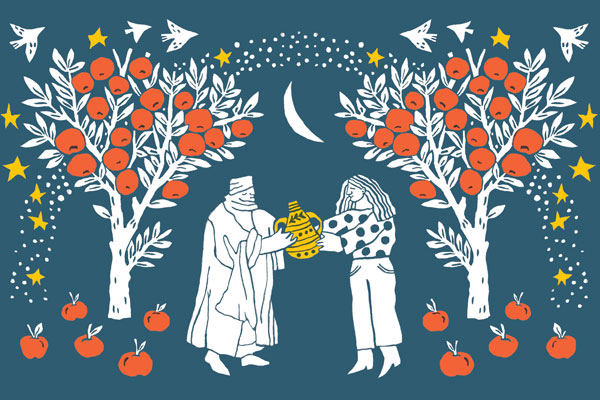
Stuffy nose: The next time your nose is stuffed up, mix 1 teaspoon ACV in ¼ cup warm water and drink. The potassium in apple cider vinegar thins mucus and the acetic acid halts the growth of bacteria. For even greater effectiveness, add a few grains of cayenne or gratings of horseradish (but be forewarned — it will be hot!).
Stomach problems: Mix 1 to 2 tablespoons ACV into ¼ cup water or apple juice. Drink each morning and before meals. If your stomach issues include diarrhea due to a bacterial infection, the antibiotic properties of apple cider vinegar can help root out the problem. (Note that ACV can aggravate stomach problems for some people; start slowly, and discontinue use if your issue gets worse.)
Fever #1: To lower a fever, bathe in a tepid or warm bath with ½ cup ACV added to the bathwater. Be certain there are no drafts in the room. After the bath, quickly wrap in a warm flannel sheet to build body heat, which will help reduce fever.
Fever #2: Mix equal parts ACV and water. Soak a cloth in the cool mixture and wrap it around your feet or around your head to reduce a fever. Keep your body bundled warmly to build body heat. You can also add a drop or two of lavender essential oil to the mixture.
Exhaustion: Drinking 1 to 2 tablespoons ACV added to a cold vegetable drink or a glass of water will counteract lactic acids building in your body due to exercise or stress. The reason? ACV contains amino acids, potassium, and enzymes that are energizing to the system and help overcome tiredness.
Fungal infection ACV combats various fungal infections, such as thrush and athlete’s foot. For athlete’s foot, combine ¼ cup ACV with a few drops of tea tree essential oil and use as a spray directly on the rash, and as a spray in shoes and on socks. If the ACV is too potent and burns, dilute with water. It should sting when applied, but not burn. For thrush, dilute the vinegar in water and use as a gargle.
Heartburn: ACV mixed with water and sipped during a meal can help relieve heartburn. Start with a low dose, in the range of 1 teaspoon to 1 tablespoon ACV in ½ cup warm water, with a bit of honey or maple syrup to soften the flavor. Increase the dosage as needed. (Please note: For some individuals, ACV can exacerbate rather than heal heartburn and GERD. Discontinue use if symptoms get worse.)
Sunburn: ACV is one of my favorite remedies for relieving the pain of sunburn. Mix equal parts ACV and water and spray over the sunburned area. To be even more effective, for every ½ cup of ACV/water spray, add 2 to 4 drops lavender essential oil. Lavender will help bring relief and help the sunburn heal faster.
As a hair rinse: ACV is a favorite hair rinse to be used after shampooing. The vinegar will boost your hair’s body and shine. Fill a bottle with ½ cup ACV and 1 cup cold water. Pour the solution through your hair after shampooing. Rinse with clear warm water. For even more dramatic results, use rosemary-infused ACV: Combine ¼ cup fresh or dried rosemary with 1 quart ACV, let steep for 2 to 3 weeks, then strain and use.
Fire cider — a folk remedy made with garlic, ginger, onions, horseradish, cayenne, and apple cider vinegar — brings together the potent healing and benefits of each of these ingredients in a single, spicy health tonic. The formula for making it also happens to be wonderfully adaptable. The following fire cider recipe, by Juliet Blankespoor of the Chestnut School of Herbal Medicine in Asheville, North Carolina, is a tad milder and sweeter than most others, making it a great gift for the herbally uninitiated. It is especially beneficial for those with high blood pressure and atherosclerosis, thanks to the bioflavonoids in the hibiscus and pomegranate, along with the medicinal attributes of garlic and ginger. Why is it “cheater” fire cider? Typically, fire cider is made by placing the ingredients in a glass jar and letting it sit for weeks upon weeks. This recipe is a single-day affair.
If you have more time and want to maximize your ingredients to make a stronger cider, you can complete the first step at right, add the hibiscus (but not the fruit), and let the slurry steep for a month. Add the pomegranate and orange juices right before straining. At that point you can finish the recipe, skipping the heating part.
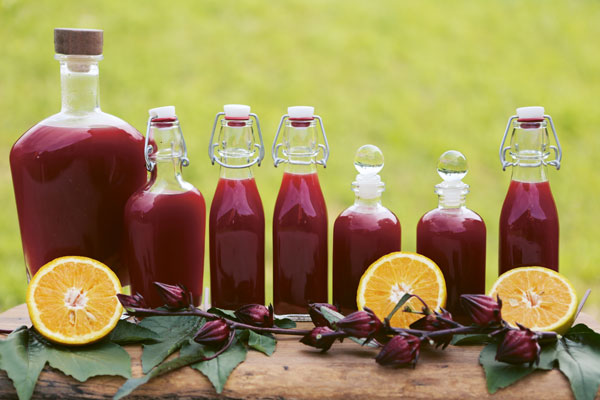
Hibiscus-Pomegranate-Orange “Cheater” Fire Cider
This recipe makes about 80 fluid ounces; if you are making fire cider just for yourself, I recommend making a quarter batch, which will yield about 16 ounces.
Ingredients
- 2 large heads garlic
- 2 medium onions
- 5 ounces horseradish root (1½ cups coarsely chopped)
- 4 ounces fresh ginger root (about 1 cup coarsely chopped)
- 2 ounces fresh turmeric root (about ½ cup coarsely chopped)
- ½ ounce dried whole cayenne peppers (about ¾ cup), or 1 tablespoon ground cayenne
- 64 ounces (8 cups) apple cider vinegar
- 2 oranges
- 2 large pomegranates (plump, succulent, and garnet in color), or 8 ounces pomegranate juice
- 1¼ ounces dried hibiscus flowers (approximately ¾ cup)
- 10 ounces (1¼ cups) honey (use less for a more savory vinegar)
Directions
Peel the garlic and coarsely chop the onions, horseradish, ginger, and turmeric. Working in two batches, put the chopped roots in a food processor or blender (preferably glass), along with the cayenne peppers. Pour in enough of the apple cider vinegar to cover. Blend carefully with the lid on, taking care not to let fumes or slurry get in your eyes.
Transfer the slurried spiciness from both batches to a double boiler. Add the rest of the apple cider vinegar to the slurry and heat gently. Keeping the lid on, warm the mixture over low heat (don’t let it get above 120°F/49°C) for 3 hours, stirring occasionally. Again, be careful to avoid the fumes!
After a couple of hours, taste the slurry. If it’s too mild for your fire cider pleasure, this is your chance to add more of the spicy herbs and cook for 1 more hour.
Meanwhile, back at the bat cave, peel and section your oranges and deseed the pomegranates, sneaking off a nibble or two. Put on an old apron and mash the oranges and pomegranate seeds with a potato masher in a bowl in the sink.
After 3 hours of total cooking time, turn off the heat and add the hibiscus and the juicy pomegranate/orange pulp. Let the mixture sit for 1 hour and then check the color; it should have a beautiful red hue. If it seems too light, add more hibiscus and let it sit a little longer.
When the cider has that beautiful red hue, strain the mixture through cheesecloth or a potato ricer. You’ll need to squeeze out or press the slurry or you will lose a great deal of the medicine. (Don’t use your bare hands or you’ll burn/irritate your skin.) Add the honey and mix well, making sure all the honey is dissolved.
Pour the cider into sterilized glass jars, label, and store in the refrigerator, where it will keep for 1 year. The dosage is 1 teaspoon as needed.
Note: The extra liquid from the pomegranate and oranges can dilute the vinegar enough to allow microbial growth, which is why this cider should be refrigerated. Keep an eye out for signs of spoilage, such as mold or off-smells.
Text and recipe excerpted from Fire Cider! © 2019 by Rosemary Gladstar. All rights reserved.


